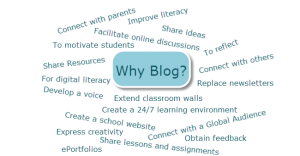Guest post
By Jessica Sanders
Studies have proven time and time again that parent involvement is crucial to a student’s long-term learning and well-being.
“Children are more likely to become proficient in reading and math during the early elementary school years if their parents are involved in home learning activities, provide materials such as dictionaries to nurture their children’s cognitive growth, and monitor their children to make sure that they spend enough time on homework,” according to a July 2010 Child Trends Report.
Technology helps teachers ensure that parents are provided with all possible avenues to become involved. It brings the classroom directly to them; often allowing you, as the teacher, to deliver real-time updates directly to parents, whether they’re are at work, in the car or at home.
This also allows parents to be involved in their child’s school day without much effort on your part or theirs, which is a major benefit: “When schools invite and encourage parent involvement, parents are more likely to become engaged,” according to Empowering Parents Through Technology.
Use the following tech tools to connect with parents— whether they’re reading a blog post or checking the classroom Facebook page—and ultimately improve student learning and success.
Apps
“There’s an app for that” is a phrase most people are familiar with and holds true in education. Teachers have many apps to choose from that help connect parents with the classroom. Whether you’re sharing student photos or updates on grades, these two apps are a great addition to your technology toolbox:
Collaborize Classroom: Use this app to connect with students and parents in an exclusive, class-specific forum. Here you can privately discuss grades with parents and share links, photos and information the entire group as well.
Remind 101: Use this app to remind parents about school field trips—“Forecast is calling for rain, don’t forget to send your child with an umbrella and rain coat!”—Or send real-time updates, for example while you’re in the classroom or out at recess. Busy parents will appreciate the reminders and updates and you’ll appreciate the convenience.
Social Media
This is one of the easiest ways to stay in touch with parents because most people are on social media in some capacity. Remember these important details when using social media for school:
- Always create a private group on Facebook if possible. This decreases the likelihood that personal information could be shared with more than just your class.
- Keep personal information private. Don’t share information about grades in comments or wall posts. It sounds obvious, but is an important detail to keep at the front of your mind at all times.
- Make a “teacher” account so you can keep your private information to yourself.
Consider which tool will be the most helpful. Facebook is likely the most popular platform, however Twitter is a great option as well. If using Twitter, create specific hashtags for your class so it’s easy for parents to find information in one place.
Website
A classroom or teacher blog is a great way to connect with other teachers and students but especially parents. Nicole Long, a secondary language arts teacher recalls how the parent page on her blog has become one of the most important spots for parents: “This has become a place where parents know they can find important information, whenever they need it, without having to send an email and wait on a response.”
A website or blog is a simple and free medium for posting student work, classroom updates and classroom photos; don’t forget to have a special place for parents to visit with important information and updates.
Free Learning Tools
There are variety of free learning tools that teachers and parents can use to monitor the progress of student work. For example, Whooo’s Reading is a free online platform where students can log their reading, answer common core-aligned questions and comment on their peers’ reading. Parents are involved in account set up and can log in at any time to see how much reading their children have done each week, month, etc. Some other free tools include:
- Google Classroom
- Moodle
- Turn It In
Emails
Most parents have email addresses, making this a simple way to keep them involved without asking for much in return. Use email to share:
- Class newsletters
- Field trip permission slips
- Class photos and videos of students working on a project or presenting
- Announce major assignments
The proper use of technology ensures parents are involved in their child’s education, whether you send daily photos from the classroom or write weekly blog updates. Studies draw direct correlations between parent involvement and student success and this is a simple way to ensure that happens.
Bio: Jessica Sanders is the Director of Social Outreach for Learn2Earn. She grew up reading books like The Giver and Holes, and is passionate about making reading as exciting for young kids today as it has always been for her. Follow Learn2Earn on Twitter and Facebook, and send content inquiries to social@learn2earn.org.










